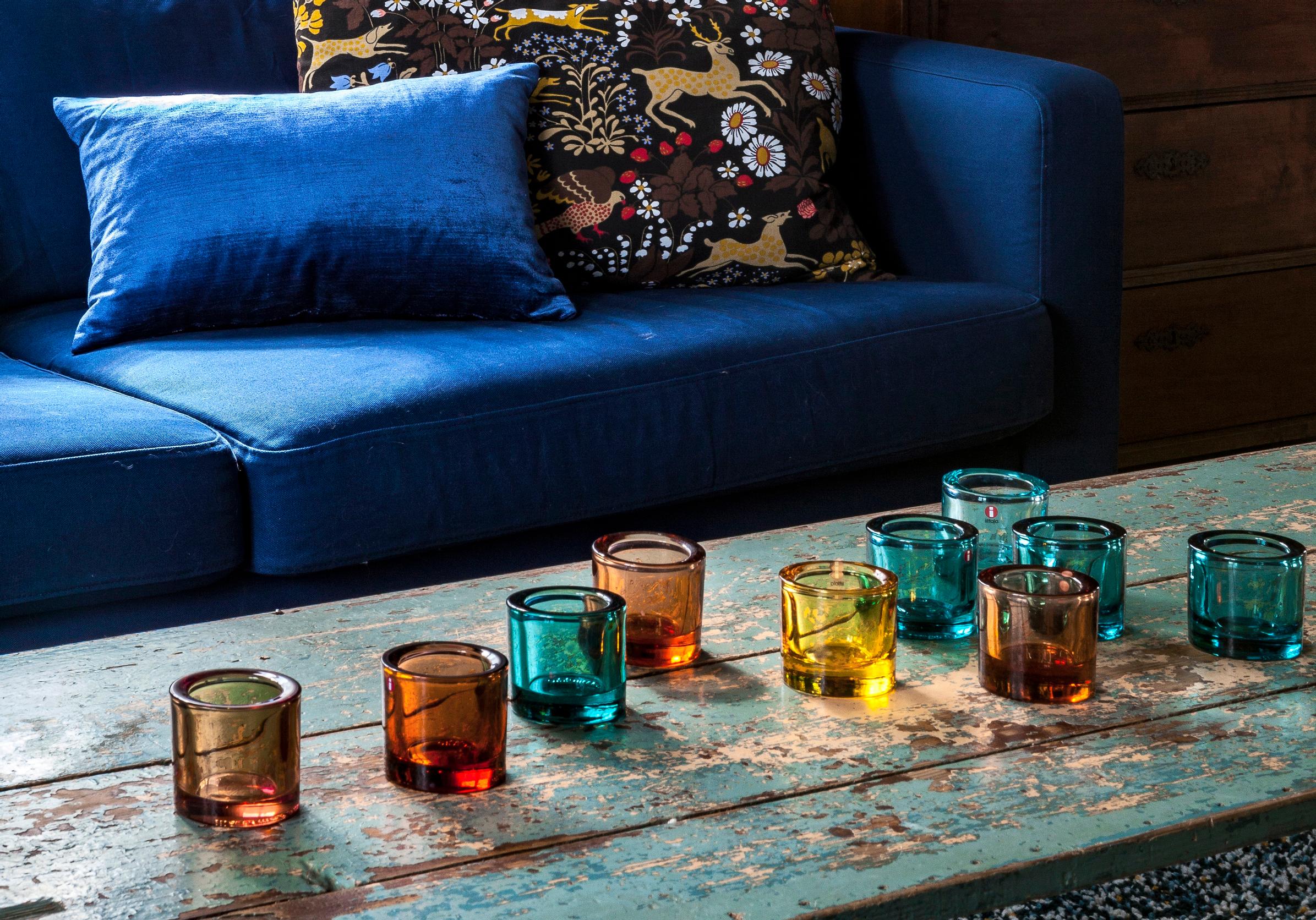
The Kivi tealight holder is a true Finnish design classic—and coveted by collectors
The first Kivi tealights, designed by Heikki Orvola, went on sale in 1988, and since then, this Finnish design classic has even adorned the Nobel festivities. There are officially 38 color variations of the Kivi tealight holder, and the rarest ones can be worth hundreds of euros.

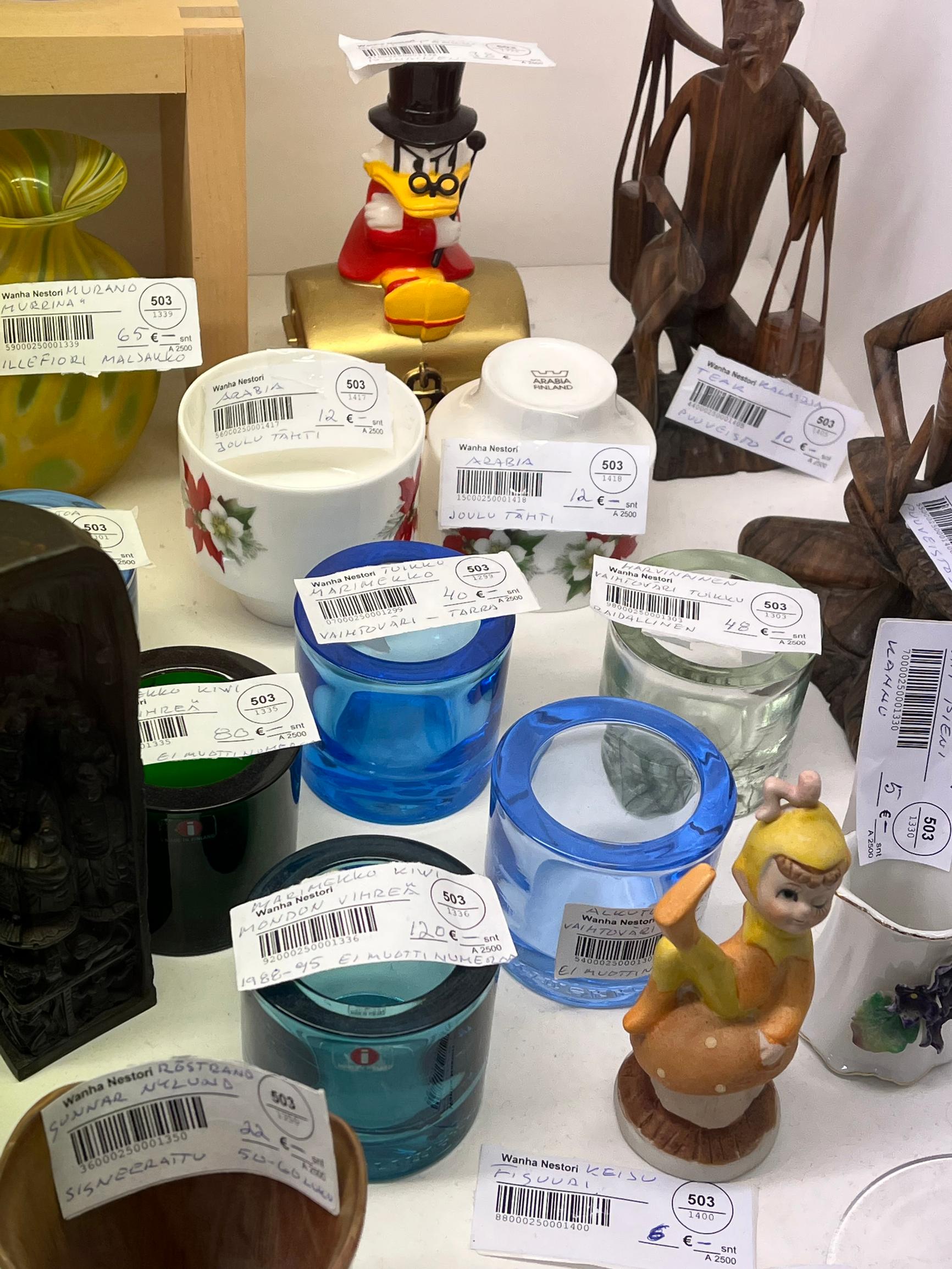
A simple shape is often the best, whether it’s a cube, sphere, or a cylinder; the Kivi (stone, rock) tealight holder representing the latter. This object is eternally elegant, and when you pair it with a living flame, something magical happens: even an ordinary moment turns into one with a touch more ambience and significance.
Kivi tealight holders have found their way into countless Finnish homes in dozens of different colors. The newcomer for spring 2025 is the apple green Kivi, which has already been in production in the past. The very first Kivis went on sale in 1988.
Being a common household item, older Kivi tealights are often sold at flea markets and other places that sell used items. Prices can range from ten euros up to several hundred euros. At the end of this article, you’ll find all the official color variations and tips on the most valuable rarities.

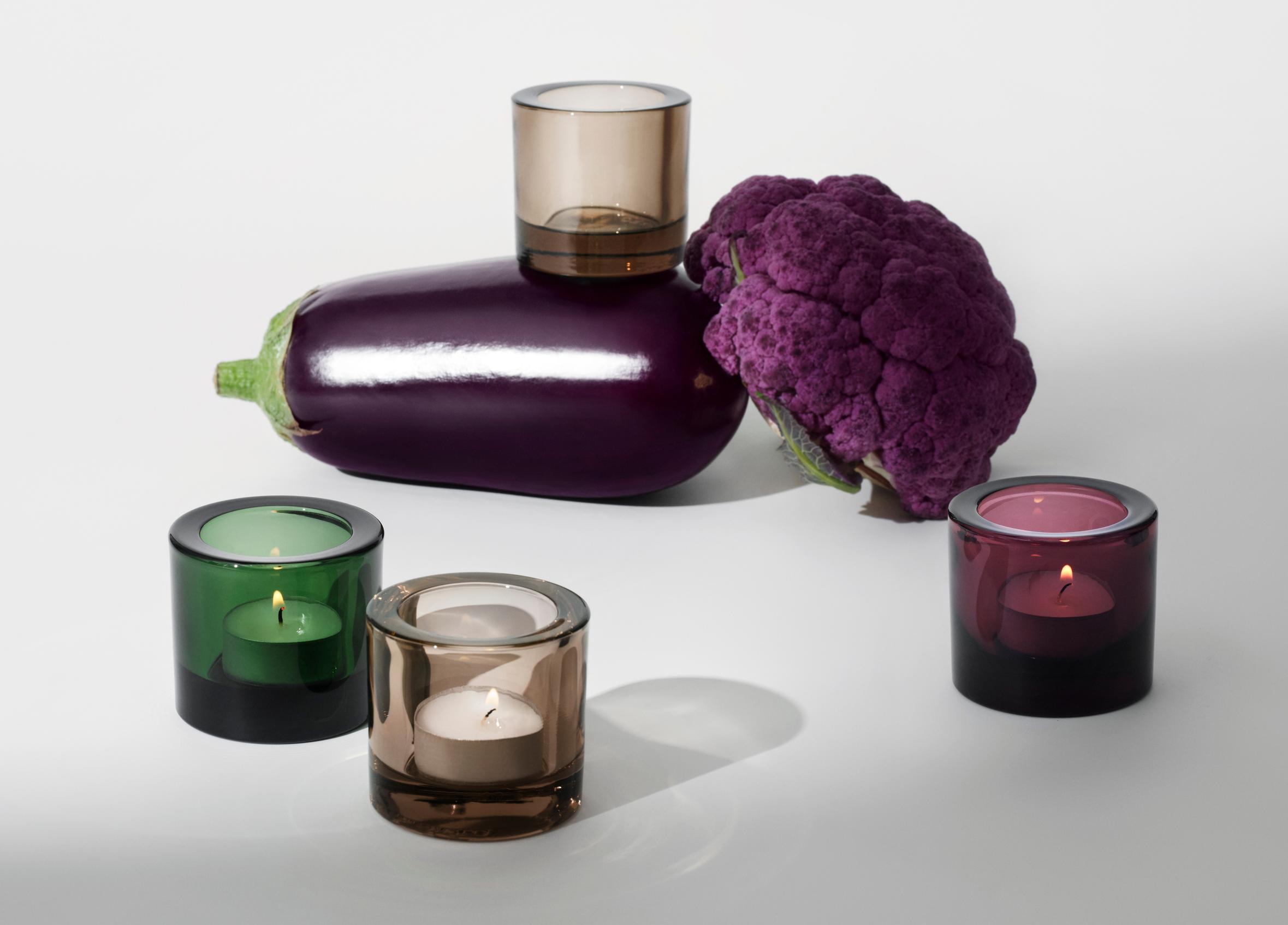

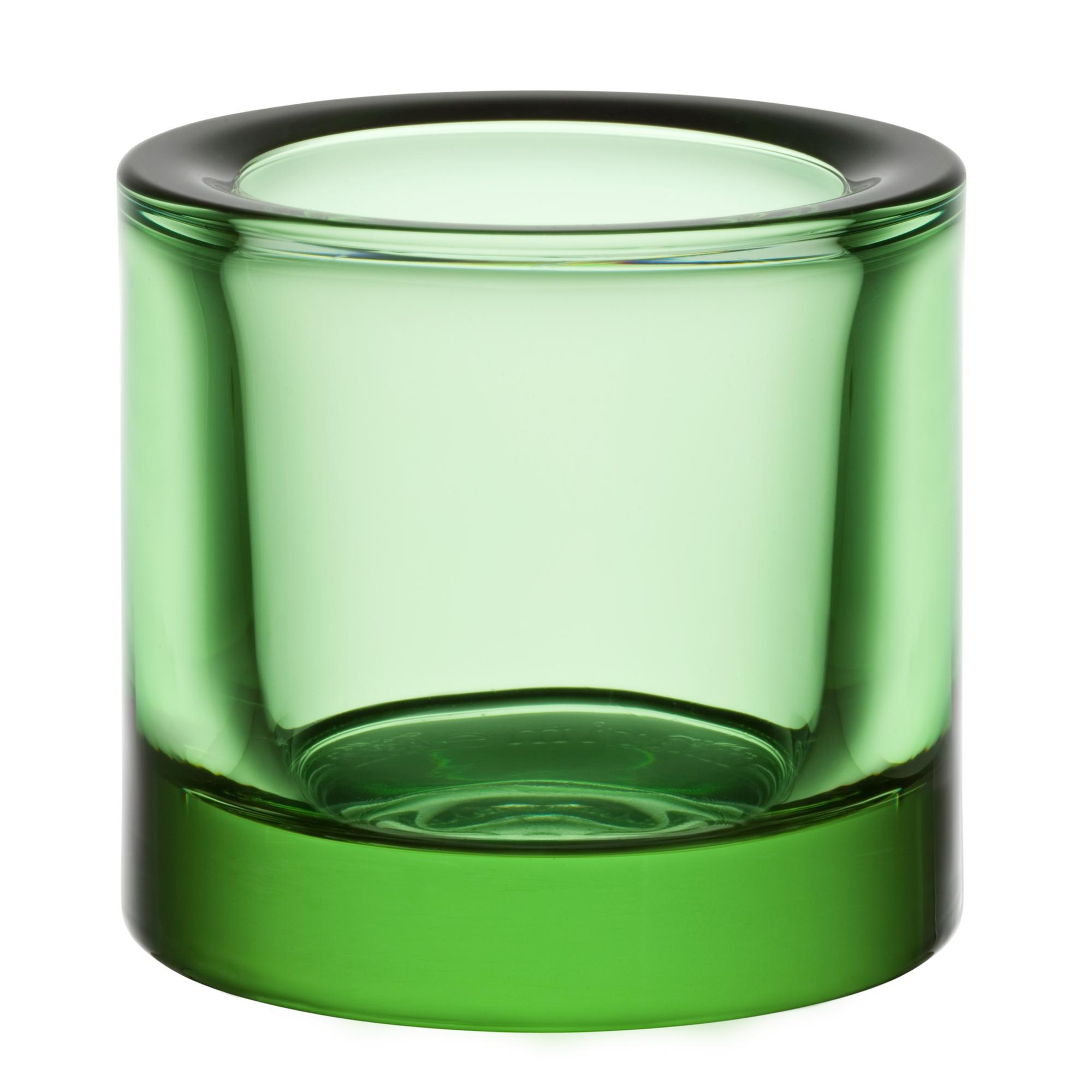
How did it all begin? As is often the case, it wasn’t mere coincidence but rather talent and a compelling design philosophy that caught people's attention. In 1983, designer Heikki Orvola had been creating art glass at the Nuutajärvi glass factory in Urjala, Finland, which he was got to display at Galleria Sculptori in Helsinki.
“That exhibition was my breakthrough. Marimekko’s long-time artistic director, Hilkka Rahikainen, also visited it, and she asked me to design a collection of printed fabrics for Marimekko. My first patterns were unveiled in 1985, and our collaboration continued into the 1990s,” says Heikki Orvola.
In 1987, Orvola was asked to design tableware products for Marimekko, as well. His square-shaped Bökars plates, produced in two different sizes, nicely complemented the long-selling Mariskooli bowls. Around the same time as the plates, the cylindrical Kivi tealight holders were born. Heikki Orvola had landed on a form that was nothing short of ingenious in its utter simplicity.
“Marimekko’s prints are so colorful and eye-catching that it would have been impossible to design any ornate shapes to go with them. That’s why I opted for such a classic—and you could even say self-evident—shape as a cylinder. My name had been added to the bottom of the Bökars plates, but when I was asked if it should also be added to the bottom of the Kivi pieces, I pointed to their simplicity and said it wasn’t necessary. Looking back, adding my name would actually have been a good idea.”
Heikki Orvola’s personal favorites are the lightest shades, ranging from pale pink to light green and lilac. They appear particularly striking in the thick-rimmed glass of the Kivi tealight holders.
Marimekko commissioned new tealight holders from the familiar Nuutajärvi factory, and they began producing the holders with a mold-based pressed glass technique. Nuutajärvi had been the first in Finland to start manufacturing pressed glass, way back in 1851. Orvola also designed Kivi vases (120 and 200 mm in height) to go with the tealight holders, which were made using a centrifugal casting technique. However, their production was burdened with technical issues, so only a very limited number were made.
The very first Kivi tealight holder colors were basic hues that the factory commonly used at the time, such as clear, green, brown, and blue glass. Only later, in order to maintain consumer interest, did production expand to include up-to-date seasonal colors. Heikki Orvola’s own favorites are the lightest shades, from pale pink to light green and lilac. He thinks that light colors look especially stunning in the thick-rimmed glass of the tealight holders.

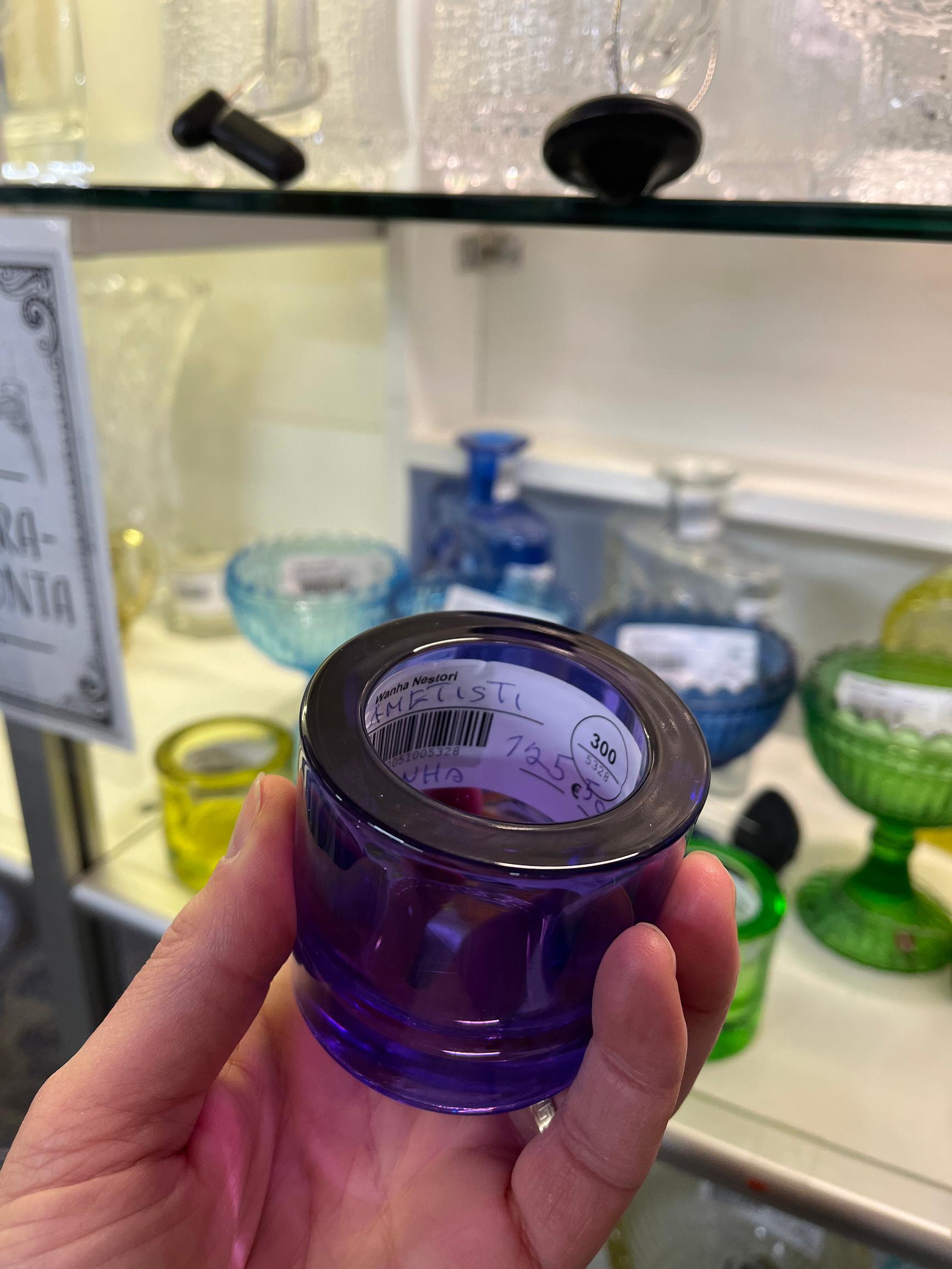
The triumphant rise of the Kivi tealight holders certainly didn’t happen overnight, but after a few years, sales started to climb substantially and there’s been no end in sight.
“Because sales weren’t very high in the early years, it’s entirely possible that if the Kivi tealight holders had belonged to Nuutajärvi’s own collection, their production would have been discontinued in time. Fortunately, Marimekko believed in the product,” says Orvola.
One Nuutajärvi product manager even felt that the Kivi pieces should be half a centimeter shorter, but Orvola stood his ground. There was also a discussion suggesting that the edges of the Kivi tealight holders be thinner, but nothing came of that either.
In 2002, Orvola came up with a “big brother” for the Kivi tealight holder, which received the IF Design Award in Germany the following year.
At the Nobel banquet, the clear Kivi tealight holders blended harmoniously with the fire-gilded bronze candelabras and floral arrangements.
Quite the surprise, is what Heikki Orvola experienced last year when he heard that his clear-glass Kivi tealights were included in the table setting at the banquet held during the Nobel festivities—and not just on any table, but the table of honor reserved for the laureates. There they blended harmoniously with the fire-gilded bronze candelabras and floral arrangements.
What Orvola is particularly delighted about is that the Kivi tealight holder is featured prominently in the three-volume series 999 Design Classics published by Phaidon, as entry number 875.
“They note there that the Kivi tealight holder is such a simple object it appears as though it wasn’t designed at all.”
All official Kivi tealight colors from 1988 to 2025

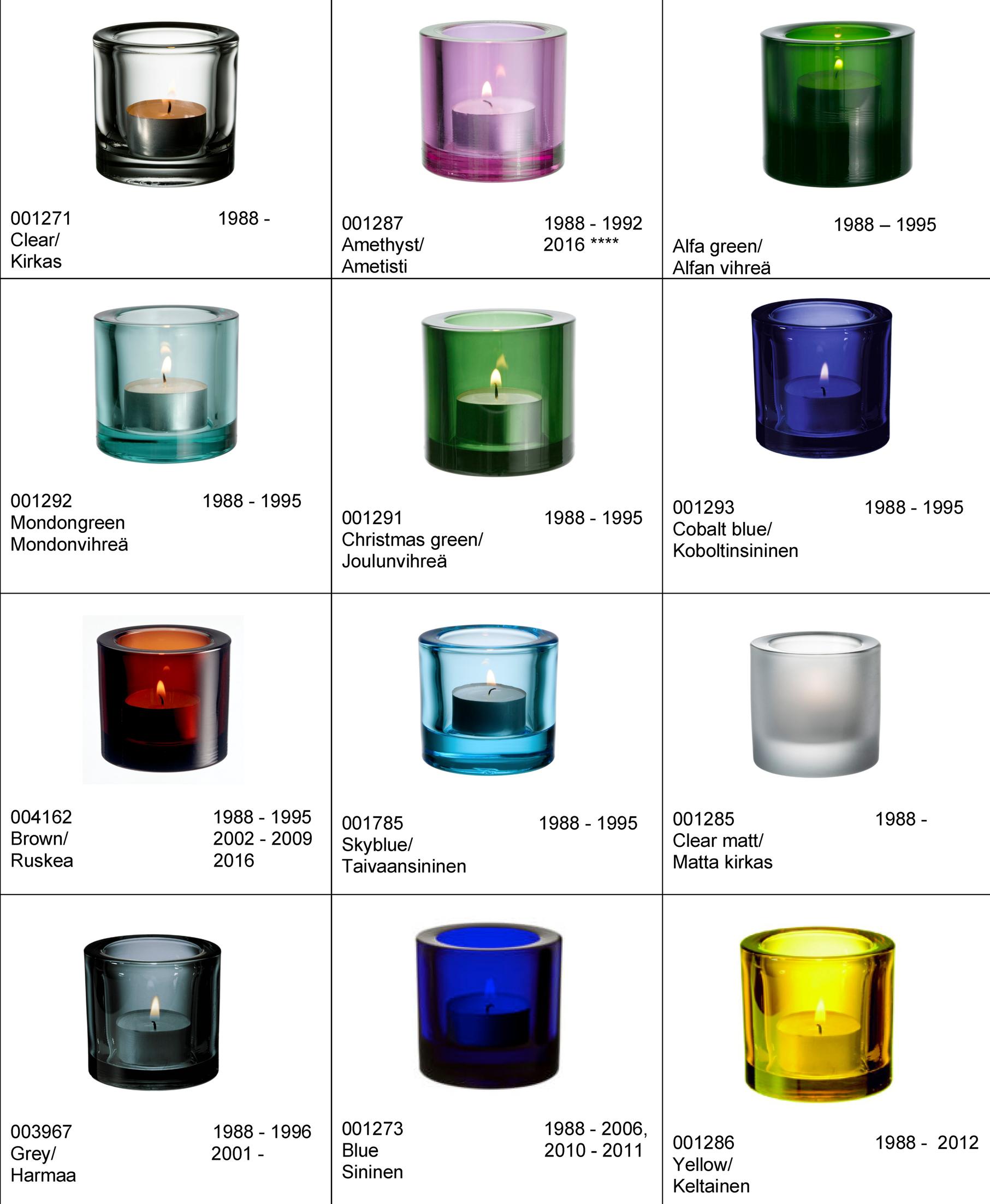

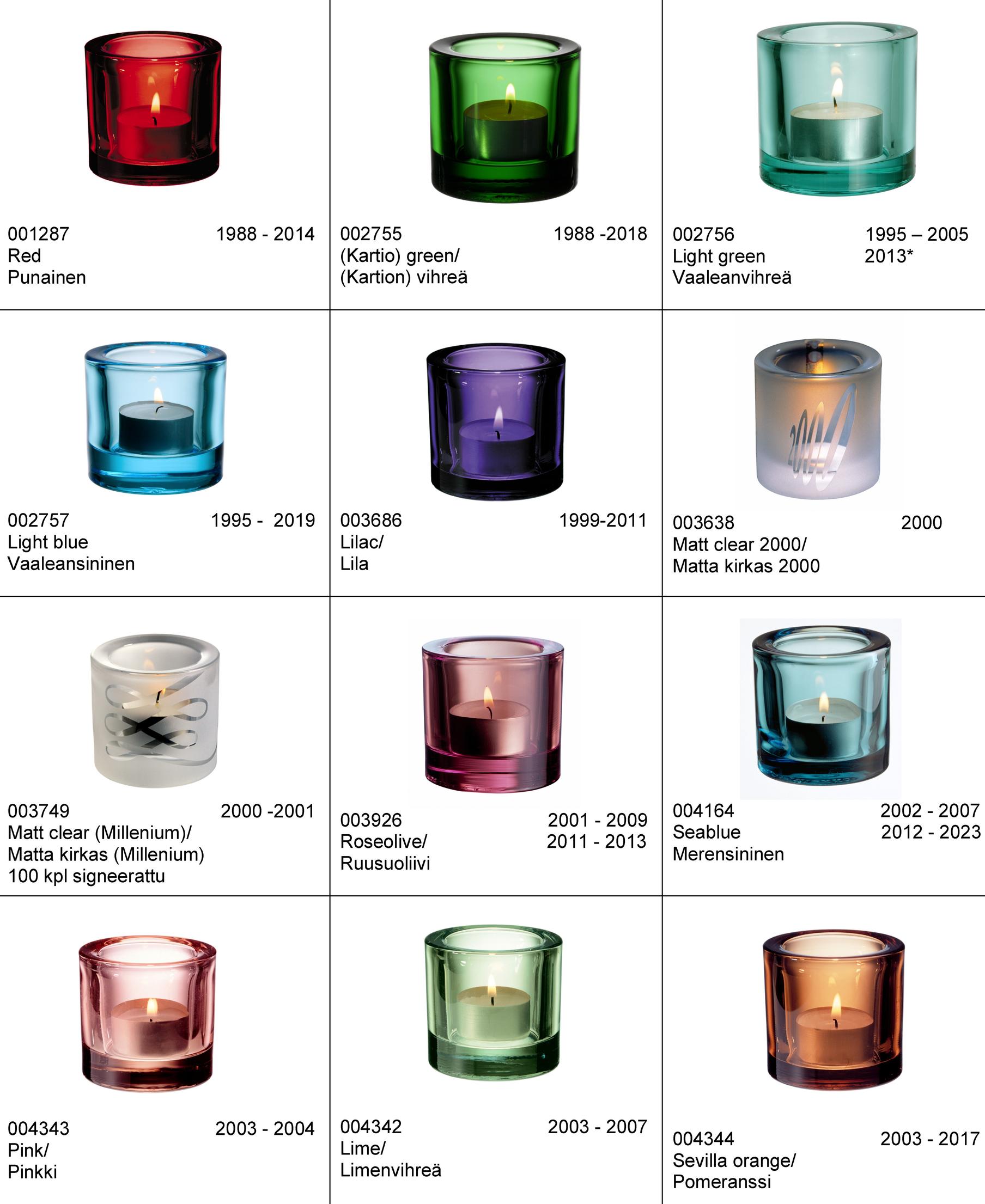

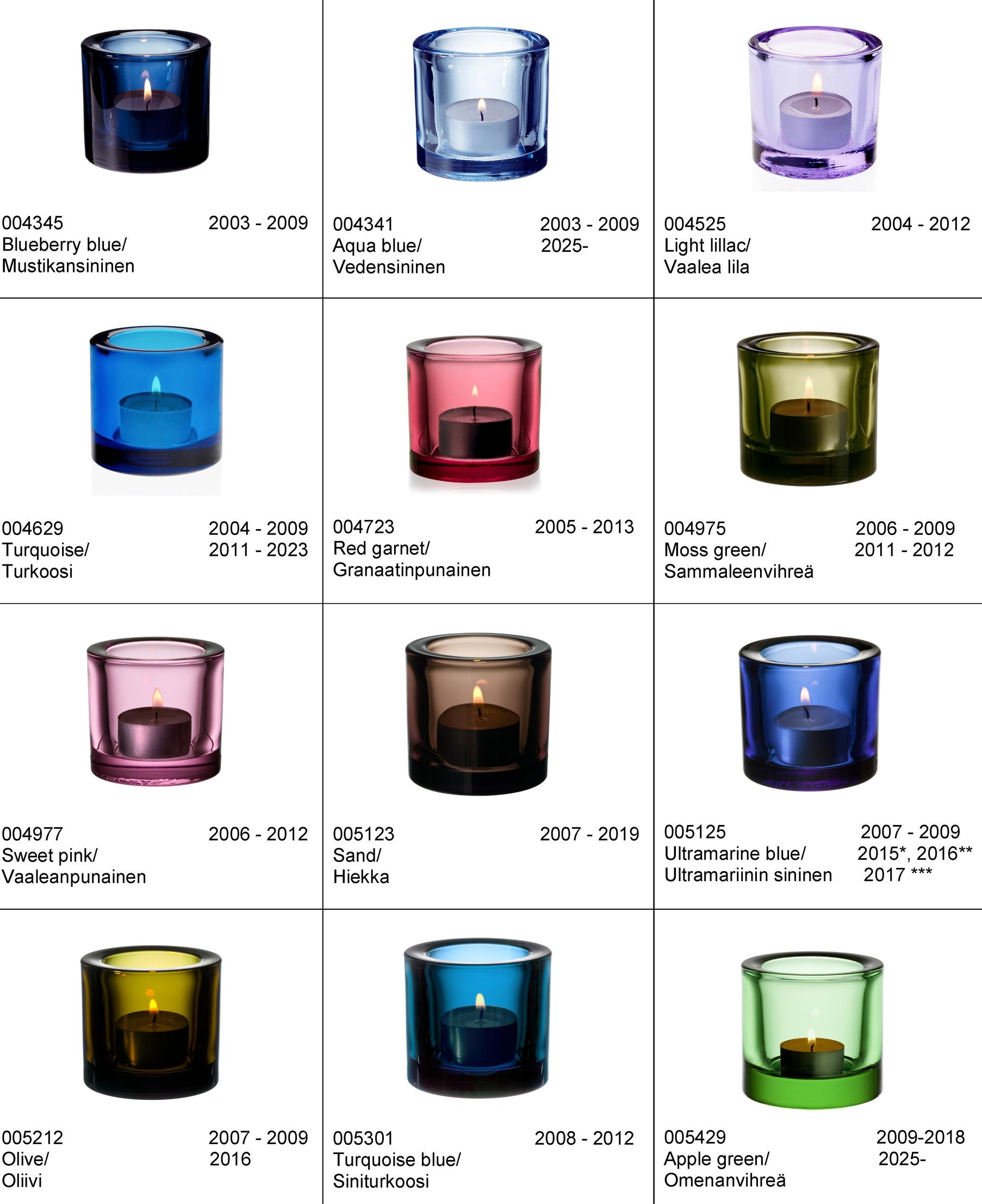

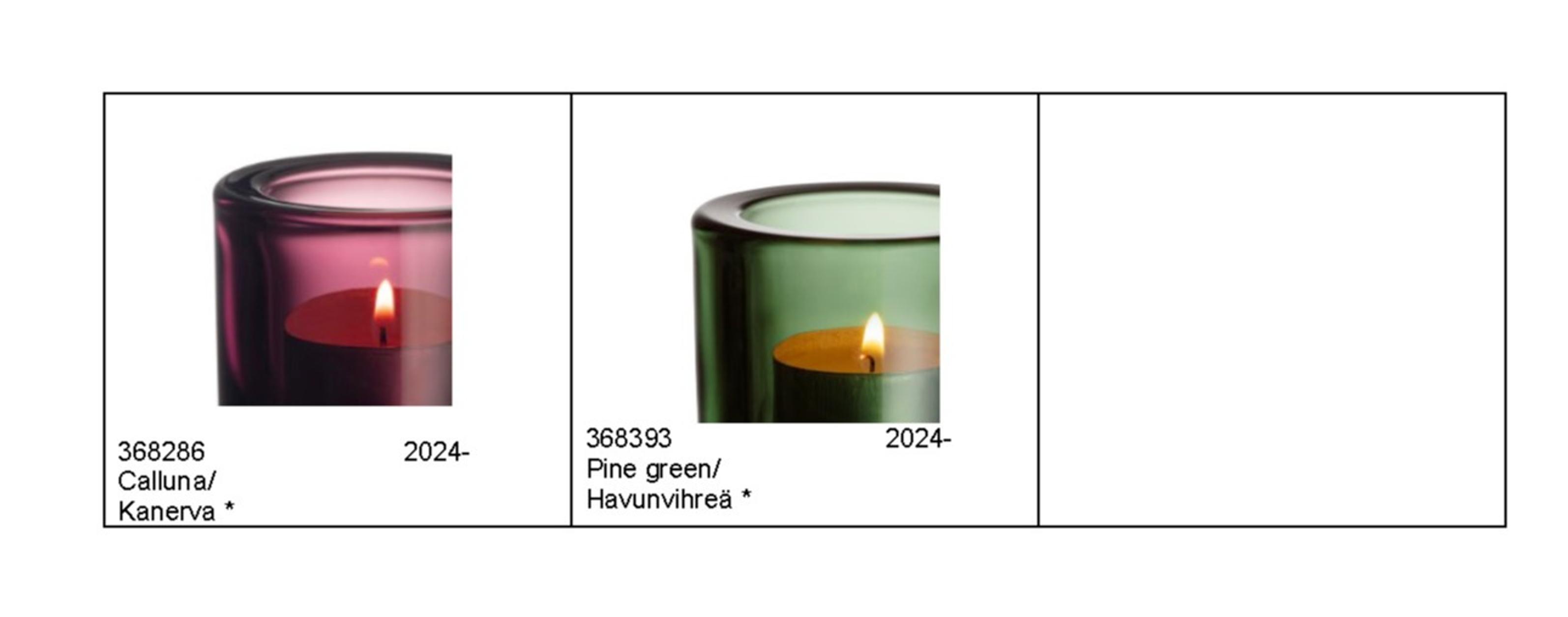
Insights to the Kivi tealight holder
- The Kivi tealight holder has been produced in two heights: 60 mm and 80 mm. The latter was discontinued in 2014.
- Since 1988, there have been 38 official colors on the market. In addition, there have been various “intermediary” or “alternate” shades available at different times that do not appear in the official color list. These intermediary shades are lighter and more indefinite compared to the official colors, and they occur when one color is replaced by another during production and the old color merges with the new color before the glass batch is fully cleared of the old color.
- Currently, there are 10 different colors on the market. Calluna is part of a special edition that is only available in limited quantities. Red cranberry is being phased out. It will be replaced by apple green, the spring and summer 2025 seasonal color.
- The price range for older Kivi tealight holders is broad, ranging from ten euros to a few hundred euros.
- Collectors particularly value the amethyst (neodymium) tealight holders. A true rarity is the Suomi 100 (“Finland 100”) tealight holder, which was produced in ultramarine blue, as well as the matte-finished Millenium tealight adorned with a ribbon-like motif, of which only 100 signed pieces were made. Also rare is the sandblasted Tuikku 2 000 (“Tealight 2000”), engraved with the number 2 000.
- Kivi tealight holders were made at the Nuutajärvi glass factory until 1995. Later, nearly all Kivi pieces have been produced at the Iittala glass factory.

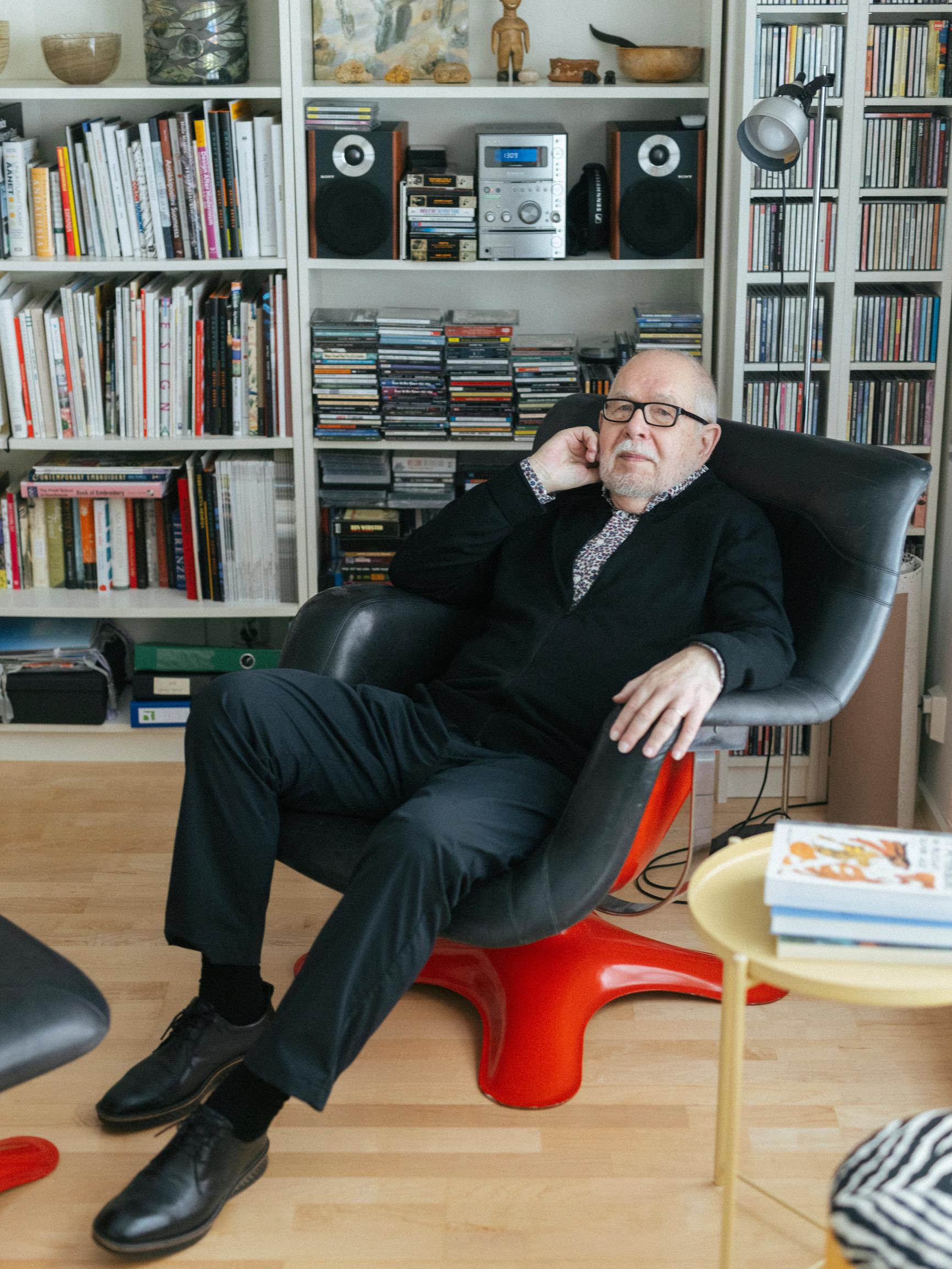
Heikki Orvola, the designer of the Kivi tealight holder
- Born in Helsinki in 1943 and raised in Oulu. Now lives in Helsinki.
- Graduated from the School of Art and Design with a specialization in ceramic art in 1968.
- Has designed eleven glassware sets for the Nuutajärvi glass factory and created unique glass art pieces. As a permanent designer for Arabia, he has also designed five tableware collections.
- Also known for his exquisite embroideries, Marimekko fabric prints, and enamelware designed for Järvenpään Emali.
- Taught glass technology at the University of Art and Design from 1977 to 1991 and has worked as a freelance artist since 1994.
- Was awarded the Pro Finlandia Medal in 1984, the Kaj Franck Design Prize in 1998, and the honorary title of Professor in 2002 (granted by the President of Finland).


